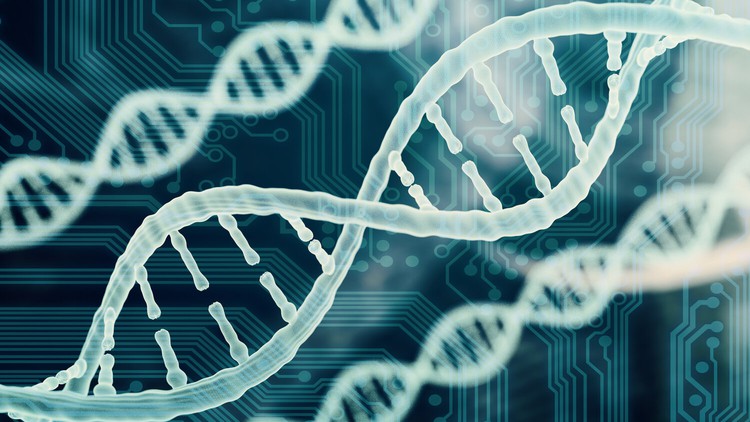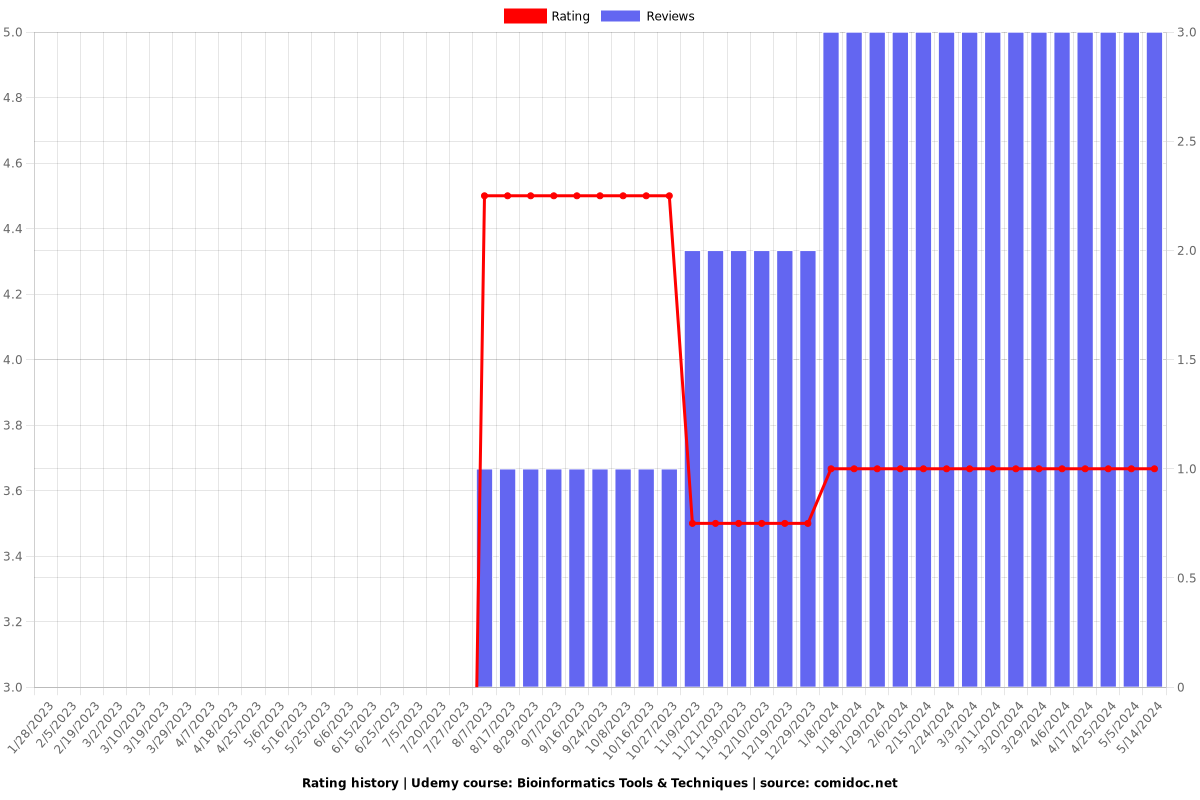Bioinformatics Tools & Techniques
Get Command on Bioinformatics Tools & Techniques

What you will learn
To analyze and interpret large amounts of data from DNA sequencing, proteomics, and other high-throughput experiments.
Bioinformatics tools can be used to compare the genomes of different species, which can help to understand how different organisms have evolved over time.
This can lead to the development of new therapies that are tailored to the specific genetic makeup of an individual.
This can speed up the drug discovery process and reduce the costs associated with it.
Why take this course?
Bioinformatics Tools & Techniques
Bioinformatics is the field of science that combines biology, computer science, and information technology to analyze and interpret biological data. There are a wide variety of tools and techniques used in bioinformatics, including:
Sequence Alignment: tools such as BLAST, FASTA, and ClustalW are used to align sequences of DNA, RNA, or proteins to identify similarities and differences.
Phylogenetic Analysis: tools such as PAUP and MrBayes are used to infer evolutionary relationships among species based on DNA or protein sequences.
Gene Prediction: tools such as AUGUSTUS and FGENESH are used to predict the location and structure of genes in DNA sequences.
Microarray Analysis: tools such as GeneSpring and Partek are used to analyze the expression levels of thousands of genes simultaneously in order to identify patterns of gene expression associated with specific biological processes or diseases.
Structural Bioinformatics: tools such as PyMOL, VMD and Chimera are used to visualize and analyze the three-dimensional structure of proteins and nucleic acids.
Data Mining: tools such as WEKA, KNIME, and Orange are used to extract knowledge from large datasets.
These are just a few examples of the many tools and techniques used in bioinformatics. The field is constantly evolving, with new tools and techniques being developed all the time to help researchers understand the complex data generated by modern biology experiments.
Benefits of Study Bioinformatics Tools & Techniques
The study of bioinformatics tools and techniques can provide several benefits for individuals and organizations, including:
Advancement of Biomedical Research: Bioinformatics tools and techniques allow scientists to analyze and interpret large amounts of data from DNA sequencing, proteomics, and other high-throughput experiments. This can help researchers to understand the underlying mechanisms of diseases, identify new drug targets, and develop personalized medicine.
Development of New Therapies: Bioinformatics tools can be used to analyze the genomic data of patients to identify genetic variations that may be causing a disease. This can lead to the development of new therapies that are tailored to the specific genetic makeup of an individual.
Improved Drug Discovery: Bioinformatics techniques can be used to screen large numbers of compounds to identify those that have the potential to be developed into new drugs. This can speed up the drug discovery process and reduce the costs associated with it.
Better Understanding of Evolution: Bioinformatics tools can be used to compare the genomes of different species, which can help to understand how different organisms have evolved over time.
Career Opportunities: With the increasing amount of biological data being generated, there is a growing demand for bioinformaticians to analyze and interpret this data. The study of bioinformatics tools and techniques can open up a wide range of career opportunities in academia, industry, and government.
Interdisciplinary Field: Bioinformatics is an interdisciplinary field that combines biology, computer science, and information technology. This allows for a wide range of applications and career opportunities to study, research or develop innovative solutions in the field of genomics, proteomics, metabolomics, etc.
Who Can study of Bioinformatics Tools & Techniques
The study of bioinformatics tools and techniques is open to anyone with an interest in the field, including:
Life Science Students: Students studying biology, biochemistry, genetics, or related fields can take courses or pursue degrees in bioinformatics to gain the skills necessary to analyze and interpret biological data.
Computer Science Students: Students studying computer science, information technology, or related fields can take courses or pursue degrees in bioinformatics to gain the skills necessary to develop and use bioinformatics tools and techniques.
Medical Students: Medical students can take courses or pursue degrees in bioinformatics to gain a deeper understanding of the genetic and molecular basis of disease, which can inform the development of new therapies.
Researchers: Researchers in academia or industry can take courses or pursue degrees in bioinformatics to gain the skills necessary to analyze and interpret the data generated by their experiments.
Professionals in Other Fields: Professionals in fields such as agriculture, environmental science, or biotechnology can take courses or pursue degrees in bioinformatics to gain the skills necessary to analyze and interpret data relevant to their field.
It's worth noting that depending on the specific field, bioinformatics may require a certain level of mathematical and computational understanding. The field may also require knowledge of biology and genetics, especially in case of some specific areas in bioinformatics like functional genomics, proteomics, etc.
Salary Package After Study of Bioinformatics Tools & Techniques
The salary package for someone with training and experience in bioinformatics tools and techniques can vary depending on several factors such as the level of education, years of experience, location, and the specific job function. However, on an average, the following is the salary package for bioinformatics professionals.
Entry-level Bioinformatics Positions: Entry-level positions such as bioinformatics analyst or bioinformatics programmer can expect to earn a salary in the range of $50,000 to $80,000 per year.
Mid-Career Bioinformatics Professionals: Bioinformatics scientists, bioinformatics managers, or bioinformatics project leaders can expect to earn a salary in the range of $80,000 to $120,000 per year.
Senior-Level Bioinformatics Positions: Senior-level positions such as bioinformatics directors or bioinformatics project managers can expect to earn a salary in the range of $120,000 to $200,000 per year.
It's worth noting that the above figures are just an approximation and the actual salary package may vary depending on the location and the specific industry. In addition, job titles and responsibilities may vary from one organization to another.
It's also worth noting that the field is constantly evolving and the demand for bioinformatics experts is increasing day by day. As such, the salary package for bioinformatics professionals is likely to increase in the future.
Charts
Price

Rating

Enrollment distribution
